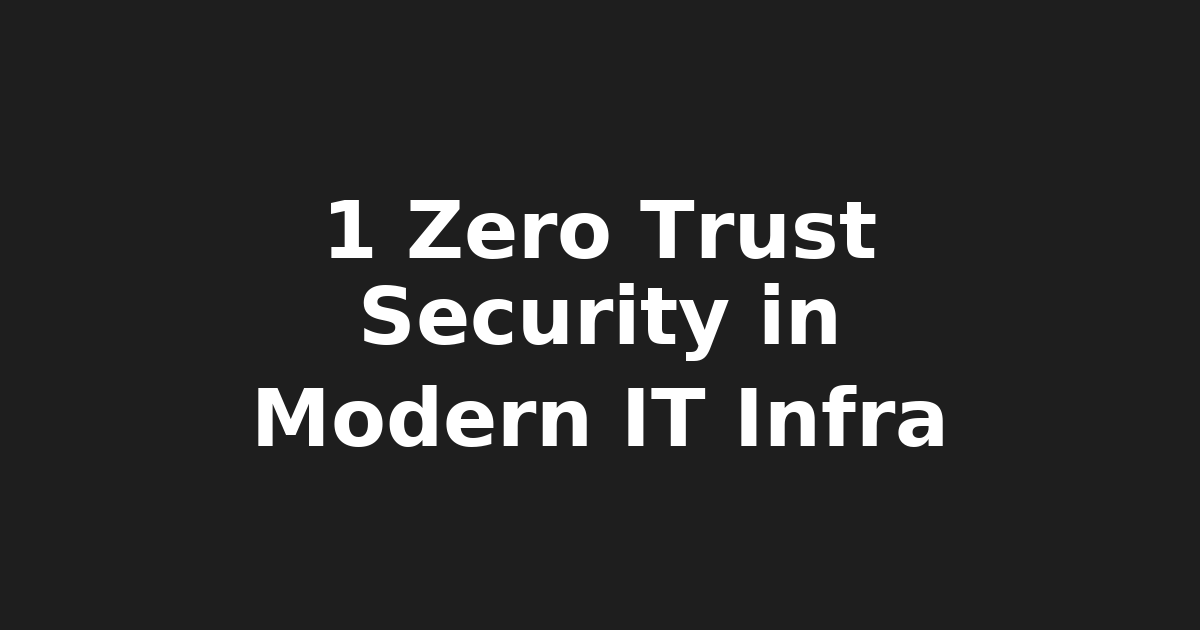1. Zero Trust Security: Strengthening Modern IT Infrastructure

Exploring the Role of Zero Trust Security Model in Modern IT Infrastructure (10 min read)
Hey there, tech enthusiasts! Today we're diving into the exciting world of cybersecurity - more specifically, the Zero Trust Security Model. With remote work and cloud-based applications on the rise, it's essential to keep our digital fortresses secure without relying on that cozy "trusted internal network." Let's get started! 🚀
First things first: What is the Zero Trust Security Model? It's a security concept centered around the belief that organizations should not automatically trust anything inside or outside its perimeters and instead must verify anything and everything trying to access resources. Sounds familiar? That's because we've all heard "never trust, always verify."
Now let's discuss why this matters. In 2025, it's estimated that there will be 6.4 billion people using the internet worldwide - that's a whole lot of potential attack surfaces! By adopting the Zero Trust Security Model, we can protect our precious data from those sneaky cybercriminals lurking around the digital corners.
But Josh, how do I implement this Zero Trust Security Model? Fear not, my dear reader! Implementing a Zero Trust Security Model requires a layered approach:
- Identity and Access Management (IAM): Verify who's accessing your resources by implementing strong authentication methods like multi-factor authentication (MFA).
- Network Segmentation: Divide your network into smaller segments to limit the spread of any potential attacks or breaches.
- Least Privilege Principle: Give users and devices only the access they need to perform their tasks, and no more.
- Monitor Everything: Keep a close eye on your systems, looking for unusual activity or patterns that could indicate an attack.
- Automate Your Security: Use tools like firewalls, intrusion detection/prevention systems (IDPS), and Security Information and Event Management (SIEM) to automate the process of identifying threats and responding to them swiftly.
Now, let's move on to our next topic: Containerized Applications - Risks and Mitigation Strategies 🐳
Containerized Applications: Understanding and Mitigating the Risks
Stay tuned, folks! We'll be discussing Linux Kernel Exploits, Securing APIs, Implementing Secure DevOps Pipeline with GitHub Actions, and much more in upcoming articles. Remember: Always keep learning, stay curious, and embrace the ever-evolving digital landscape! 🌐
Motivational Tip: Stay ahead of the curve by continuously educating yourself on new technologies and security best practices. Cybersecurity isn't a one-time thing - it's an ongoing journey, so keep learning and growing! 💪
🙋♂️ This post was brought to you by Josh from KeepItTechie — helping you break into tech, one command at a time.
